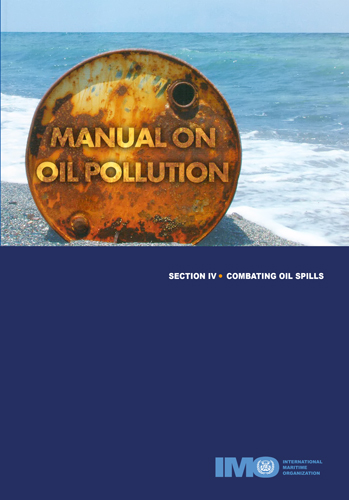Manual on Oil Pollution. Section IV. Combating Oil Spills/Руководство по предупреждению и ликвидации загрязнения нефтью. Раздел IV. Борьба с нефтяными разливами
Издание на английском языке
The book examines the experiences and lessons learned over thirty years of fighting marine oil pollution. The updated version includes information on the behavior of various types of oil during a spill, their impact on marine and coastal resources, as well as response methods such as aerial surveys, containment and recovery measures, the use of chemical dispersants, and incineration. Shoreline cleanup strategies, waste management, and bioremediation are also described. A separate chapter is devoted to working with heavy fuels and emulsified petroleum products. The book contains recommendations on training, exercises, and equipment maintenance. It is intended for governments, especially developing countries, and industry, offering effective approaches to oil spill response.
Содержание
Chapter 1 Introduction
Chapter 2 Types of oil
2.1 Crude oils
2.2 Petroleum products.
Chapter 3 Fate of oil spills in the marine environment
3.1 Properties of oil
3.2 Natural weathering processes acting on spilled oil
3.3 Movement of oil slicks
3.4 Combined movement, weathering processes and modelling
Chapter 4 Effects of oil on marine and coastal resources
4.1 Introduction.
4.2 Ecological effects
4.3 Recreational beaches and sea areas
4.4 Ports and marinas
4.5 Industrial installations
4.6 Fish
4.7 Marine mammals
4.8 Sea turtles
4.9 Marine birds
4.10 Coral communities and ecosystems
4.11 Wetland communities and ecosystems
4.12 Nature reserves and marine parks
Chapter 5 Situation evaluation and response options
5.1 Source identification and incident details
5.2 Prevention or reduction of further spillages
5.3 Aerial surveillance, including remote sensing
5.4 Assessment of the threat
5.5 Spill response options and their limitations
Chapter 6 Containment and recovery of oil
6.1 Introduction.
6.2 Containment booms
6.3 Recovery devices - skimming equipment
6.4 Temporary storage
6.5 Integrated containment and recovery operations
6.6 Recovery of subsurface oil
6.7 Sorbents
Chapter 7 Chemical dispersion
7.1 Introduction.
7.2 Dispersants
7.3 Application techniques
Chapter 8 In situ burning
8.1 Introduction.
8.2 Features of in situ burning
8.3 Environmental and health considerations
8.4 Safety considerations
Chapter 9 Shoreline response
9.1 Introduction
9.2 Pre-spill contingency planning
9.3 Shoreline spill assessment
9.4 Shoreline cleanup methods
9.5 Managing shoreline response
9.6 Site restoration
9.7 Care of wildlife
Chapter 10 Bioremediation
10.1 Introduction.
10.2 Degradation of petroleum hydrocarbons
10.3 Bioremediation techniques
10.4 Opportunities for bioremediation
10.5 Contingency planning
Chapter 11 Management and disposal of oil and oily debris
11.1 Introduction
11.2 Types of collected material
11.3 On-site temporary storage and separation for liquids and solids
11.4 Land transport
11.5 Waste treatment methods
11.6 Waste disposal methods
11.7 Reclamation of oil
11.8 Stabilization of oiled beach materials
11.9 Direct disposal
11.10 Incineration
11.11 Bioremediation
11.12 Dune disposal
Chapter 12 Spills of heavy fuel oils - features and countermeasures
12.1 Introduction
12.2 Characteristics of heavy fuel oils.
12.3 Behaviour of heavy fuel oils when spilled
12.4 Response strategies
Chapter 13 Training, exercises, equipment maintenance and storage
13.1 Introduction
13.2 Training
13.3 Exercises
13.4 Equipment maintenance and storage
Chapter 14 Cleanup cost considerations
14.1 Introduction
14.2 Factors affecting response costs
14.3 Compensation for response costs.
Table of useful conversion factors.
Bibliography




